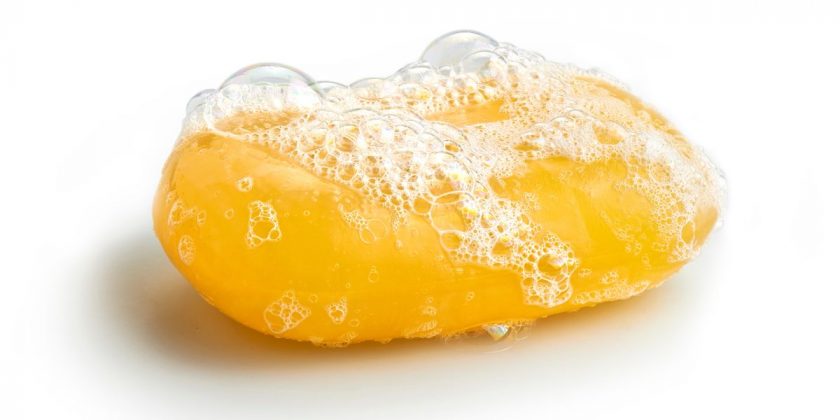Twenty seconds of scrubbing with soap is one of the best ways to protect yourself — and the people and things you touch — from disease-causing germs. But how exactly do soapy suds kill pathogenic bacteria and viruses that infect us?
Soap’s germ-zapping superpowers are built into its molecular structure: a “head” attached to a long “tail,” according to Dr. Lee Riley, a physician, professor and chair of the Division of Infectious Disease and Vaccinology at the University of California (UC) Berkeley. The head is hydrophilic, or water-loving, while the tail is hydrophobic — water-fearing or water-repelling. That hydrophobic tail has an affinity for fats, and all bacteria and some viruses — including SARS-CoV-2, the coronavirus that causes the disease COVID-19 — have a lipid membrane, which leaves it vulnerable to a soap molecule’s fat-puncturing tail.
“The tail inserts itself into the [bacteria’s] lipid membrane, and that’s how it ends up getting killed,” Riley told Live Science.
Some types of pathogens have very robust cell walls, so they can survive even after soap’s hydrophobic tail penetrates their membrane. But even in these cases, soap molecules can vanquish bacteria and viruses by surrounding and isolating them.
When soap attacks these pathogens, the tails in soap molecules attach to the cell’s lipid membrane, with the hydrophilic heads facing outward. This forms a tiny ball of soap molecules, known as a micelle, around the pathogen, Dr. John Swartzberg, a physician, clinical professor emeritus and infectious disease expert at UC Berkeley told Live Science. Bacteria or viruses are easily captured by micelles because the outside of the micelle is hydrophilic, so it’s easily swept off your hands and down the drain — along with its pathogenic prisoners — when you rinse the soap away with water.
In 2010, researchers evaluated the effectiveness of soap by having 20 volunteers contaminate their hands a total of 480 times with diarrhea-causing bacteria. The subjects were then randomly assigned to perform one of three actions: wash their hands with soap, wash their hands with only water, or not wash their hands at all. Their hands were then tested for the diarrhea-causing bugs, the scientists reported in The International Journal of Environmental Research and Public Health (opens in new tab).
In the group of subjects that did not wash their hands, the bacteria were present in 44% of the participants. In those who washed their hands with water alone, bacteria were present in 23% of the study subjects. And in the group that washed their hands with soap and water, bacteria were detected in just 8% of the people, according to the study.
Soap molecules are so effective at eliminating and annihilating the germs on our hands that antibacterial soap is completely unnecessary and can be harmful; by driving the evolution of antibiotic-resistant strains of bacteria, Swartzberg said. And when we wash antibacterial soap down the drain, it can promote the rise of antibiotic-resistant bacteria in the local water supply.
—Does UV light kill the new coronavirus?
—Can you get 2 colds at once?
—Should you exercise if you’re sick?
On top of that, antibacterial soap kills all bacteria — even the good ones that we depend on to keep us healthy, Riley added.
One key component required for soap to do its job is often overlooked, however. And that’s time. It takes at least 20 seconds for the tail end of the soap molecule to sufficiently bind itself to the pathogens on your hands or on another surface. Cutting that time short could mean missing out on the full protective effect of using soap, Swartzberg said.
Originally published on Live Science.
Donavyn Coffey
Live Science Contributor
Donavyn Coffey is a Kentucky-based health and environment journalist reporting on healthcare, food systems and anything you can CRISPR. Her work has appeared in Scientific American, Wired UK, Popular Science and Youth Today, among others. Donavyn was a Fulbright Fellow to Denmark where she studied molecular nutrition and food policy. She holds a bachelor’s degree in biotechnology from the University of Kentucky and master’s degrees in food technology from Aarhus University and journalism from New York University.
Source: Read Full Article

